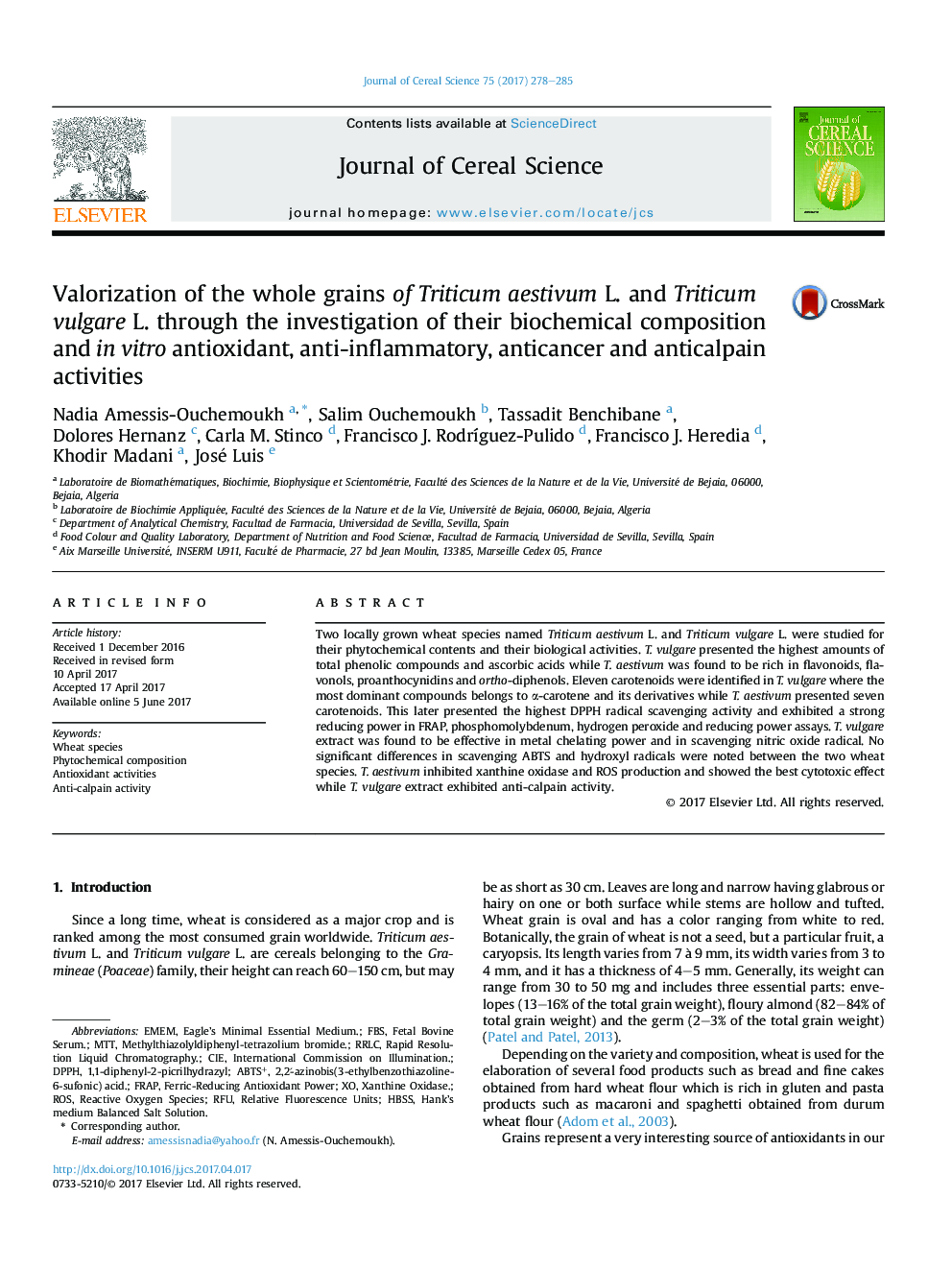| Article ID | Journal | Published Year | Pages | File Type |
|---|---|---|---|---|
| 5762381 | Journal of Cereal Science | 2017 | 8 Pages |
Abstract
Two locally grown wheat species named Triticum aestivum L. and Triticum vulgare L. were studied for their phytochemical contents and their biological activities. T. vulgare presented the highest amounts of total phenolic compounds and ascorbic acids while T. aestivum was found to be rich in flavonoids, flavonols, proanthocynidins and ortho-diphenols. Eleven carotenoids were identified in T. vulgare where the most dominant compounds belongs to α-carotene and its derivatives while T. aestivum presented seven carotenoids. This later presented the highest DPPH radical scavenging activity and exhibited a strong reducing power in FRAP, phosphomolybdenum, hydrogen peroxide and reducing power assays. T. vulgare extract was found to be effective in metal chelating power and in scavenging nitric oxide radical. No significant differences in scavenging ABTS and hydroxyl radicals were noted between the two wheat species. T. aestivum inhibited xanthine oxidase and ROS production and showed the best cytotoxic effect while T. vulgare extract exhibited anti-calpain activity.
Keywords
Related Topics
Life Sciences
Agricultural and Biological Sciences
Agronomy and Crop Science
Authors
Nadia Amessis-Ouchemoukh, Salim Ouchemoukh, Tassadit Benchibane, Dolores Hernanz, Carla M. Stinco, Francisco J. RodrÃguez-Pulido, Francisco J. Heredia, Khodir Madani, José Luis,
